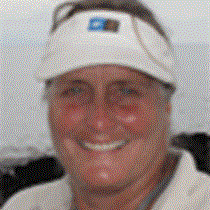Genovesa Island
We travelled much of the night and crossed the equator in the wee hours of the morning. At first light we entered the flooded caldera of Genovesa Island – also known as Tower. As the National Geographic Islander crossed the eroded caldera wall there was a mere 30 feet of water below our hull; Captain Garces lined the ship up with two navigation markers so he would enter at the water’s deepest point.
Genovesa should be called “Bird Island” since at least a half million sea birds of a dozen different species nest here! Red-footed boobies, great frigate birds and wedge-rumped and band-rumped storm petrels all have populations in the one hundred thousand individuals ranges, but there are also large populations of Nazca boobies and swallow tailed gulls and lesser number of Galápagos shearwaters, red-billed tropic birds, blue-footed boobies, brown pelicans and noddy terns.
A group of guests went kayaking before breakfast and thoroughly enjoyed paddling along at the base of the cliffs where they saw several huge manta rays, sea turtles, a hammerhead shark and hundreds of sea birds. They also observed both the pinnepeds that inhabit these islands: the sea lions and the fur seals. The morning walk after breakfast was fantastic! Swallow-tailed gulls were nesting among the rocks and behind the beach, and the mangrove shrubs had red footed booby nests at all the various stages of their life history: nest building, incubation, and young chicks. In the low salt bushes behind the beach and on the lava rocks nearby there were dozens of curious juvenile boobies perching and peering at us as we photographed them. They came out to the ship and sat on every available perch. Yellow-crowned night herons, mockingbirds, finches and doves were also plentiful; on the short, easy trail the number of bird species and individuals we watched and photographed was amazing!
After the walk, some of us stayed on the beach, swimming, snorkeling and relaxing. Others returned to the ship and went with Walter and Giancarlo to snorkel among dozens of fish species, and a few rays and sharks. In the late afternoon our naturalists took us along the cliff base in the Zodiacs and then up Prince Phillip’s Steps for a hike. We entered a palo santo forest and came out on a flat lava field. Red-billed tropic birds, more frigates, red-footed boobies and four short eared owls, seen at fairly close range, delighted us.
Motoring back to the ship as the sun set, a thin sliver of moon glowed nigh above, and the entire western sky turned from blue to orange to golden, and we were filled with joy and contentment. Such a magical and peaceful place to end our wonderful week exploring the Islas Encantadas!




